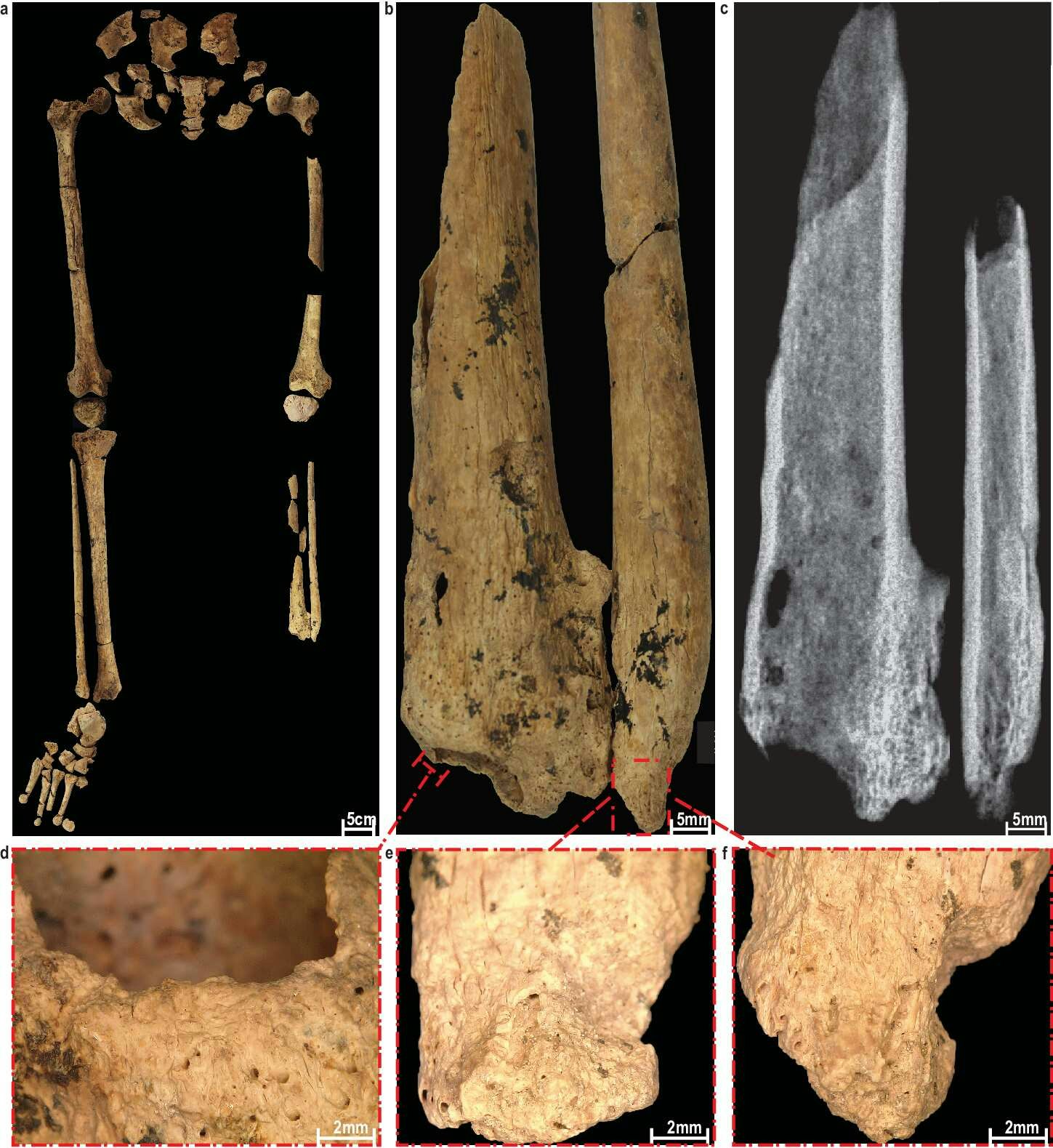
The first surgical operations occurred around the same time as the dawn of farming, about 10,000 years ago. That’s what researchers have long thought, at least.
Now, in a new study published today in the journal Nature, scientists may have discovered evidence of the earliest known use of surgery — the successful amputation of a foot and part of a leg — among hunter-gatherers at least 31,000 years ago in Borneo, long before farming emerged.
HERE'S THE BACKGROUND — Previously, the oldest known complex surgical operation involved a farmer from France about 7,000 years ago. His left forearm had been amputated and then partially healed.
Surgical operations such as amputations require detailed knowledge of human anatomy, significant technical skill, and, importantly, hygiene. Before modern clinical developments such as antiseptics, most people undergoing amputations died from blood loss and shock or subsequent infection. The first major advances in medicine, including surgical procedures, were long thought to have emerged alongside the rise of farming and settlements, which in turn led to a host of health problems that were previously unknown among hunter-gatherers.
WHAT DID THE SCIENTISTS FIND? — In the new study, archaeologists investigated the Sangkulirang–Mangkalihat peninsula on the Indonesian portion of the island of Borneo. This rugged area hosts limestone caves that are rich in prehistoric artifacts, including some of the world's earliest known rock art, which dates at least 40,000 years old.
The researchers focused on a large three-chambered limestone cave named Liang Tebo with rock art within its uppermost chamber. In 2020, a trench dug in the cave's biggest chamber revealed the remains of a person who died when they were about 19 or 20 years old. The bones lacked enough detail to confirm the person's sex.

The scientists found this person had the lower third of their left lower leg completely amputated when they were a child. The site of amputation experienced bone healing without any signs of infection.
The person lived about six to nine more years before their remains were intentionally buried in the cave. Their cause of death remains unknown.
WHAT DO THESE FINDINGS SUGGEST? — The researchers say these bones are skeletal evidence of a surgical procedure involving detailed knowledge of limb structure, muscles, and blood vessels to prevent fatal blood loss and infection.
"Demonstrating successful amputation performed on a child 31,000 years ago also implies a likely understanding of the need for antiseptic and antimicrobial management key to modern medical advances, which only occurred within the past two centuries of modern medicine," study lead author Tim Maloney, an archaeologist at Griffith University in Australia, tells Inverse.
The scientists argue the amputation was unlikely to have resulted from an animal attack or other accident, as these usually cause crushing fractures, whereas the leg bone shows a clean sloping cut. They also say the amputation was unlikely the result of a punishment, as the person apparently received careful treatment after surgery and in burial.
"It is highly unlikely that this individual could have survived the procedure without intensive nursing care, including blood loss and shock management, regular wound cleaning, as well as ongoing assistance in this mountainous rainforest terrain, enabling them to thrive into adulthood as an amputee," Maloney says. "There is no doubt the individual was a valued member of their community, and the discovery provides the earliest direct evidence for a high degree of community care and perceptions of amputees in the human past."
All in all, "this discovery overturns long-held assumptions of technological stagnation throughout Southeast Asia, and adds to a growing body of evidence that early humans, in fact thrived in late Pleistocene rainforest environments," Maloney says.
WHAT'S NEXT? — Given how the people investigated here lived in "the earth's tropics, home to some of the highest plant biodiversity, many with known medicinal properties, there is a strong case that adapting to this rainforest environment may have stimulated the development of advanced medical knowledge including plant processing for treatments," Maloney says. "Ongoing investigations are revealing clues to this aspect."







